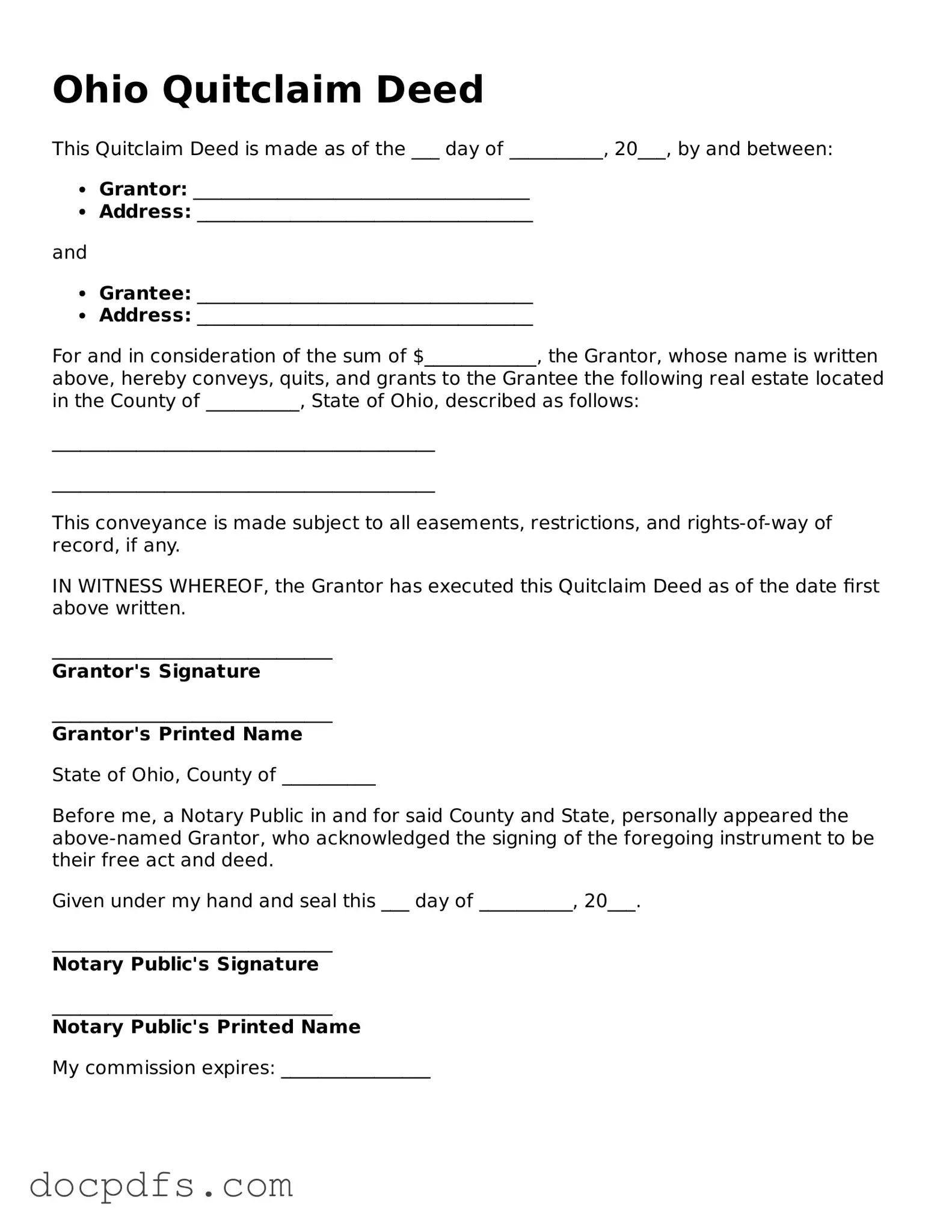When it comes to transferring property ownership in Ohio, the Quitclaim Deed form plays a crucial role. This document allows an individual, known as the grantor, to convey their interest in a property to another party, referred to as the grantee, without making any guarantees about the title's validity. It is particularly useful in situations involving family transfers, divorce settlements, or when the parties know each other well and trust that there are no hidden issues with the property. Unlike other types of deeds, a Quitclaim Deed does not require the grantor to provide a warranty or assurance that they hold clear title to the property. This can simplify the transfer process but also means that the grantee assumes the risk associated with any potential title problems. Understanding the nuances of the Quitclaim Deed form, including its requirements for execution and recording, is essential for anyone looking to navigate property transactions in Ohio effectively. Whether you are a buyer, seller, or simply exploring your options, knowing how this form works can help you make informed decisions about property ownership.
